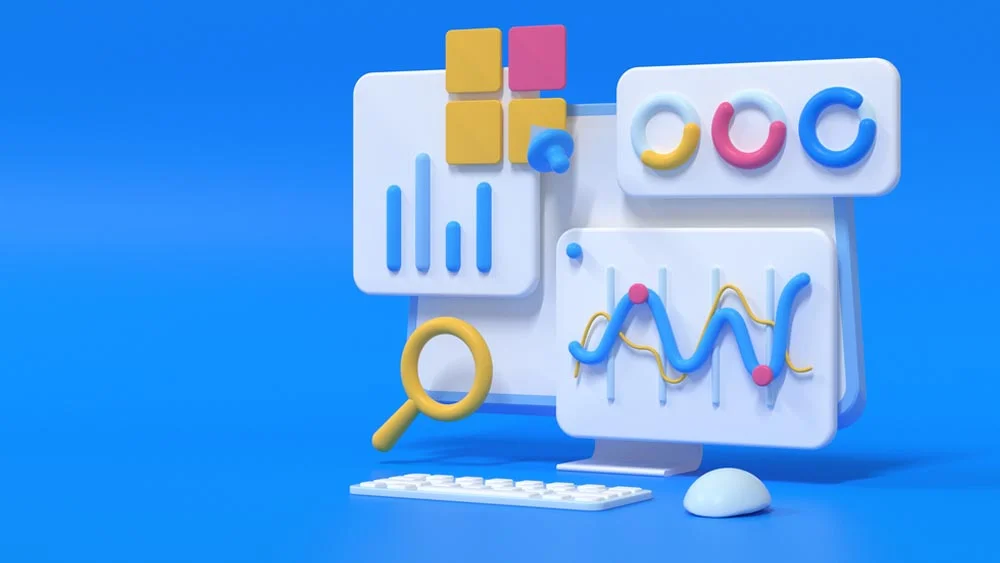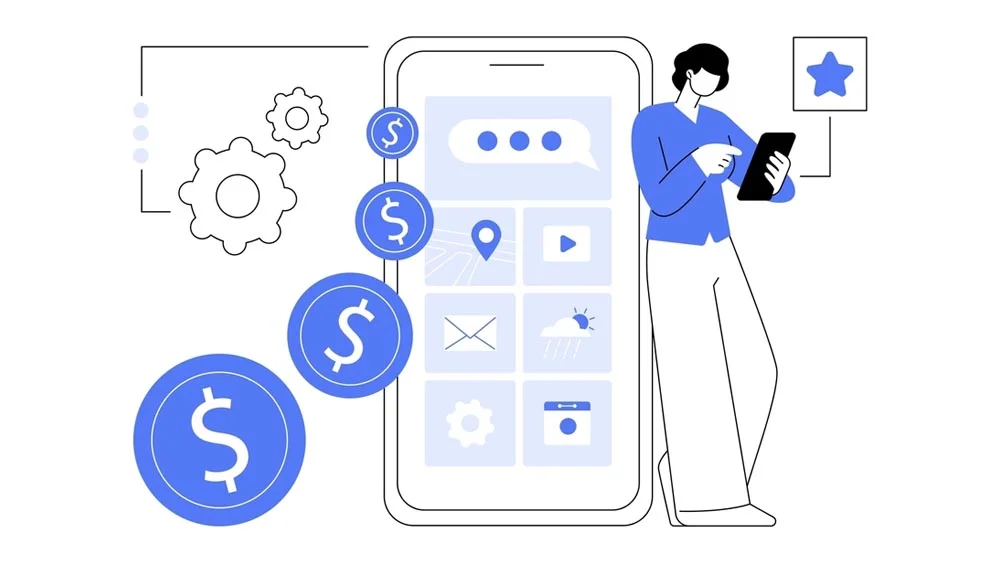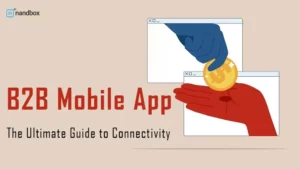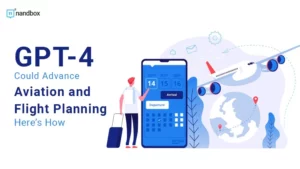If you’re a developer or business owner with an app, you need to know about app lifetime value (ALV). This metric measures the revenue your app generates over its lifetime. It’s a critical factor in determining the success of your app. In this guide, we’ll explain what ALV is, why it’s important, and how to calculate it. Any business owner will welcome the prospect of keeping an extra 5% of clients. That is in exchange for a 95% rise in revenue. Any sector can benefit from repeat business, and the app market is no exception. However, compared to other industries, retention, which is frequently referred to as lifetime value (or LTV), can be more crucial to the entire business strategy when it comes to apps.
What is App Lifetime Value (ALTV)?
The term “App Lifetime Value” (ALTV) refers to a metric that calculates the total revenue of an app. The revenue that was generated over its entire life. It takes into account all the revenue streams associated with the app, including in-app purchases, subscriptions, and advertising. ALV is a critical metric for app developers and business owners because it helps them understand the long-term profitability of their app and make informed decisions about marketing, user acquisition, and retention.
The lifetime value (LTV) of an app is, to put it simply, or to summarize it for you, the total amount of money that an average user will spend while using it. For mobile apps, this is the benefit a user will receive from the time they download your app until the time they stop using it. In light of this, app owners need to be aware that their product’s LTV serves as a key performance indicator for their marketing plan. If the LTV is low, it’s critical to comprehend why and what may be done to raise it.
What Makes “App Lifetime Value” Critical for App Success?
This is a crucial metric that will help you understand your app’s progress and keep it thriving. What makes it of great importance, though? This is exactly what we will uncover here. ALV is critical for app success because it provides a clear picture of the long-term profitability of an app. By calculating ALV, app developers and business owners can make informed decisions about marketing, user acquisition, and retention. They can also identify areas where they can improve the app to increase revenue and maximize its lifetime value. Without a clear understanding of ALV, app developers and business owners risk investing time and resources into an app that may not be profitable in the long run.
How Can You Determine an App’s Lifetime Value (ALTV)?
There are several ways that you can calculate your app’s lifetime value. There is an equation for this calculation. To calculate ALV, you need to determine the average revenue per user (ARPU). In addition to the average lifespan of a user. The ARPU calculation divides the app’s overall revenue by the total number of users. AL is the average amount of time a user spends using the app before they stop using it. Once you have these two metrics, you can multiply them together to get ALV. For example, if your app has an ARPU of $2 and an AL of 6 months, your ALV would be $12. This means that each user is worth $12 to your app over their lifetime. By tracking ALV over time, you can see how changes to your app impact its profitability and make data-driven decisions to improve its success.
Understanding that the lifetime value is made up of three key components—monetization, retention, and virality—is crucial to comprehending this statistic.
App Monetization
The total amount that a client or user spends while using an app during their lifetime is known as monetization. If an app only offers a subscription service, for instance, a user’s lifetime spend will be equal to the number of months they have spent paying the subscription cost times the price. However, there are many other ways to spend money on applications. This measure varies depending on the situation due to in-app purchases, various add-ons, and features.
App User Retention
The level of user engagement a certain software receives determines retention. Additionally, the duration of their lifecycle as a whole within the app is displayed. In other words, this measure describes how long a user uses an app overall and how that use is distributed over different time periods after they download it.
App Virality
The most challenging measure to calculate, virality, can be defined as the quantity of new users that a current user will attract. Virality, also referred to as “word of mouth,” is an illusive indicator that is frequently difficult to measure due to its interpersonal nature.
In general, each company calculates the lifetime value of their software in a unique way, but knowing these three crucial indicators can help you choose the best course of action.
Tactics and Strategies That Will Help You Boost Your App’s LTV
It is of great importance that you know that nothing works like a magic button. You have to work hard in order to increase your app’s lifetime value. It doesn’t work through a very facilitated solution. That is why we have compiled for you a list of strategies that will help you increase your app’s LTV. Read below to understand what steps you should follow to implement these effective strategies.
Facilitate Your App’s Usage for Your Users
We frequently overlook the fact that not everyone is as knowledgeable or aware of the world as we are. Your app may seem simple to you, but it may be confusing and hard to use for others. Find ways to improve your consumers’ experiences while keeping this in mind. You may possibly add a brief introduction tutorial or emphasize your user guide using design cues. You may increase the LTV of your app by using this method to retain users and keep them interested for longer.
Watch Out for Notifications From Your App
Push notifications are a great way to keep people coming back and sell them more services. The more people you can get to sign up for app updates, the more chances you have to market to them at no extra cost. To get the most out of your push notifications, make it easy and interesting for people to sign up for them. Once users have signed up, it’s also important to divide them into groups and use that information to make your approach more personal. Users are more likely to keep using your app for longer if they can use it in ways that are relevant to them.
Put Yourself in Your User’s Shoes and Think Like Them
You should definitely change your app to meet the needs of your customers. For example, if you see comparable feedback in the app store reviews, you should respond to them in a helpful way. Consider the ways you can improve the user experience, add features, and change the way you offer your services. Don’t be afraid to try something new just because it worked before.
Make Sure You Have Targeted the Right Audience
The lifetime value of an app is an excellent tool for guiding the marketing approach and budget, but it shouldn’t be the only one. You will need to spend money on marketing in the early phases of releasing your product, and you might not get a quick return. Keep in mind that at this point, brand awareness is more important to your promotional efforts than app installs are, so make sure you’re contacting the proper people. Create social media accounts and establish connections with the app’s user base. The same is true for any advertising that is paid; you must ensure that you’re focusing on the proper audience and designing your campaign around their interests.
Favor Word-Of-Mouth Advertising
The use of social media platforms is not limited to gathering user feedback. They are great venues for users to share their impressions of your software and spread the news about it. For media apps, where the greater the amount of content is shared, the more users the app will get, social sharing is especially crucial. Social media should be used as a user acquisition technique as well as a conduit for app marketing. Include sharing buttons in your app so that users may promote websites, articles, and products with ease.
Use Data Analytics Tools to Track and Analyze Your App’s Lifetime Value

There are many data analytics tools available to help you track and analyze your app’s lifetime value. Google Analytics, Mixpanel, and Amplitude are a few of the well-liked choices. These tools can help you track user behavior, retention rates, and revenue per user. By analyzing this data, you can identify areas for improvement and make informed decisions about your app’s user acquisition and retention strategies. It’s important to regularly review and analyze your app’s LTV to ensure that you are maximizing your revenue potential and providing value to your users.
Final Thoughts on an App’s Lifetime Value
Your app’s metrics are of great importance. You should always keep track of all the changes, feedbacks, and reviews that your app goes through. The whole process of creating or developing an app could sound a little bit intimidating and overwhelming. However, you have to add value for your business by creating an app that would add to your services and empower your business even more.
Since you are here, we would like to present you a no-code solution that will save you millions of hassles. Our app builder, nandbox, is a no-code native app builder. It will help you create an app from scratch without using a single line of code. A no-code solution will help you achieve your goal without the hassle of having IT or developer troubles. You will simply choose from our pre-made templates, start customizing it to your preferences, and voila! your app development journey has just begun.
Moreover, we provide you with a fully detailed documentation section that will help you understand all there is to understand about our app builder. From details on how to navigate the app builder, to steps of features configuration. We assure you that you won’t miss a thing with this section. Sign up now for nandbox’s native no-code app builder, and start developing your app and taking your business to the next level!







